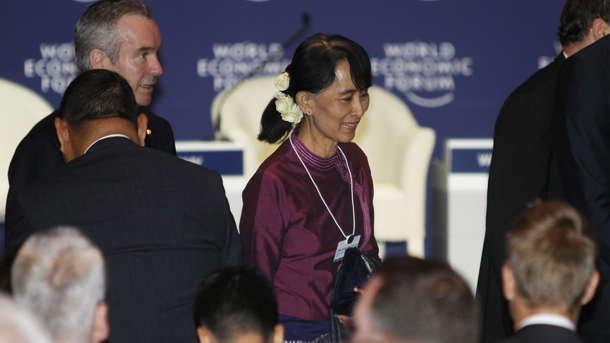As heads of governments, business leaders and industry champions gather in Bangkok for the World Economic Forum’s East Asia summit, there is no denying who the star of the show is.
Aung Saan Suu Kyi, the pro-democracy leader from Burma, is the leading light of the forum. Wherever she has gone, she has attracted crowds and there is an instant buzz when she enters a room.
Her presence at the WEF in Bangkok, her first trip outside her homeland in 25 years, is a testament to the region’s growing clout on the world stage and is a demonstration of the Association of Southeast Asian Nations’ (Asean) ability to forge a common consensus.
“Aung Saan Suu Kyi’s presence in Bangkok is proof of the ongoing democratization process in Asean,” said Mari Elka Pangestu, Indonesia’s Tourism and Creative Economy Minister. “She knows what she wants for her country and she is reaching out to the world.”
The theme for this year’s WEF on East Asia, “Shaping the Region’s Future Through Connectivity,” is timely as the 10-member grouping of Southeast Asian nations gears up for the next stage of growth.
“This region is witnessing a great transformation and is at a crucial point in realizing its huge potential,” said Pascal Lamy, director general of the World Trade Organization. “If Asean were one nation, it would be the 9th largest economy in the world today. The region has changed beyond recognition.”
The challenge for the grouping is to better integrate its economies especially with the 2015 Asean Economic Community now looming large. The region will have to boost greater air and sea connections as well as harmonize its tariff regimes if it is to boost greater intra-regional trade, tourism and capital flows.
Asean has a combined population of 600 million people, a nominal GDP of $1.8 trillion and a growth rate that is expected to exceed 5 percent on average for 2012.
President Susilo Bambang Yudhyono is leading a sizeable Indonesian delegation which includes Trade Minister Gita Wirjawan, Mari Pangestu and a number of top corporate leaders.
















